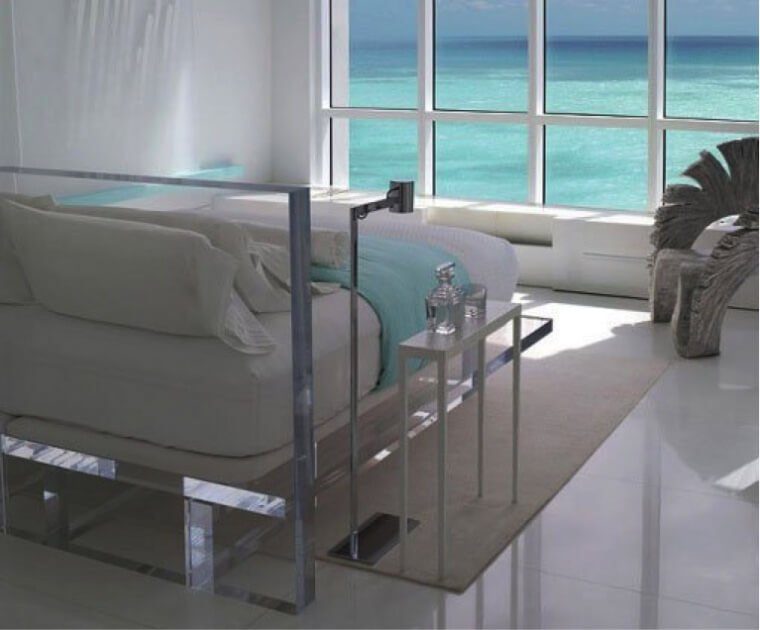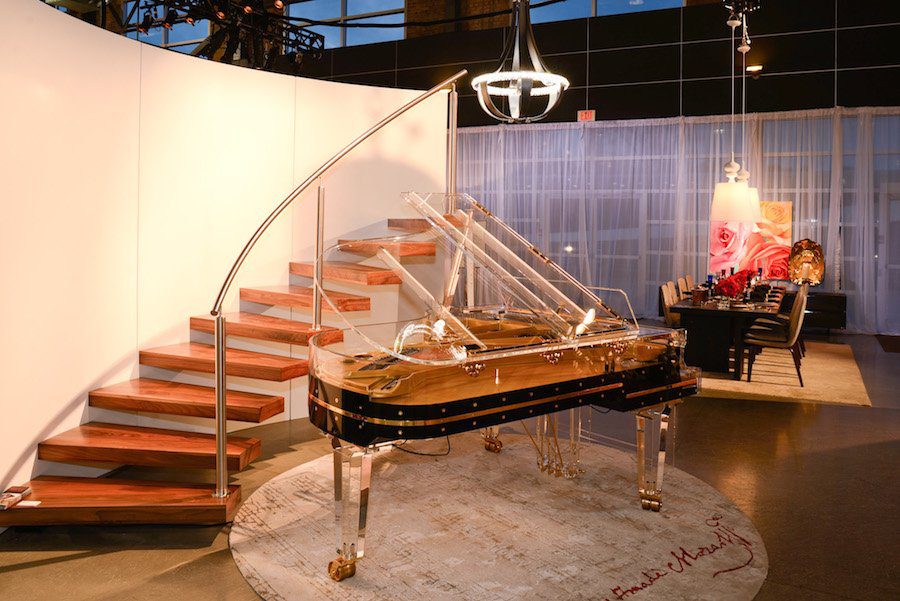A Clear Choice – Transparent Pianos
Acrylics have been used in various forms since the early 1900’s. In 1909 the first patent for phenol-formaldehyde plastics was secured by Dr. Leo Baekeland for a plastic he called “Bakelite.” It could be molded into colorful jewelry, dishware and many other items (now pricey collector items). He set off the creative imaginations of organic chemists everywhere and research began the world over.
In the 30’s, as plastic chemistry progressed, acrylic resins were developed for industrial coatings and laminated binders. In 1937, Plexiglass was introduced and played an important role in World War II as bullet-resistant glazing in our warplanes. Others developed acrylic resins with trademarks like Lucite, Perspex, and Acrylite (and many others). Products made from these exciting resins were “glass-like” clear, and free of yellowing. (unlike cheap standard plastics) and lent themselves to myriad applications.
Acrylic has come of age over the last 75 years. It now takes a permanent place in our technology and may be the basic material of the future. Incredible uses for it are found in home furnishings, automobiles, jewelry and countless industrial purposes.
One of the earliest famous Lucite home interiors was Helena Rubenstein’s New York apartment, designed by Ladislas Medgyes.

Like so many other things, acrylics could have been totally ruined by cheap imitations, the clear plastic wannabes of the 1980’s, garish stripper shoes in Vegas, and the like, but manufacturers like Kartell kept acrylic furniture classy through the decades. In 2002 a renaissance began and Lucite and Plexiglass came into its own in high-end furniture and designer homes. Then it exploded into the most sought after standard of contemporary furnishings.

It was only a matter of time before it found its way into the world of Pianos.
Transparent Pianos
Until recently two major German piano manufacturers have dominated the Transparent Piano market. Both brands, Schimmel and Blüthner are of the finest quality pianos in the industry, so the transparent, acrylic art cases also house extraordinary performance piano elements.
Schimmel Glass
The Schimmel Glas model is a Konzert Grand which runs over $300K in price, and delivers the ultimate in performance and beauty. The 7’ Glas is as strong and heavy as the 9’ Konzert Grand.
This transparent grand piano can be ordered with or without internal lighting, and can be customized in opaque colors

Schimmel Acrylic Piano K213G
Bluthner Lucid
Blüthner is by far the most ambitious manufacturer of acrylic pianos. They have taken the clear piano concept to a new high, handcrafting art cases for instruments that have the same performance characteristics of a standard Blüthner grand piano of the highest quality. Few others can rival this combination, but the prices are in high figures, well over $100k.
The Blüthner Lucid Piano model is one of the most innovative of the manufactured “glass” pianos. The use of acrylic, rather than wood provides stability against humidity and brings the design into the 21st century.
Blüthner makes acrylic digitals, uprights, and grands in staggering variations of designs, colors, and mixtures of glass piano parts with opaque colored parts.
Transparent pianos and Luxury Interiors
These 21st Century art works are in demand all over the world, and no place more than Florida’s Port Royal luxury estates. Contemporary designers are seeking uniqueness and custom designs for their clients.
Since player piano systems are now available for every style of piano, customers who don’t even play piano use them as a decorating and entertainment feature in their homes.

See our blog on Interior Designs for more interiors and how pianos are used to beautify and pull together designing elements.

Bluthner PH with Red Leather Trim
Benefits of Transparent Pianos
Besides the striking beauty, originality and outstanding customizable choices, glass pianos have practical attributes as well.
– Acrylic care consists of no more than normal wipe-cleaning to keep it looking new.
– Normal small scratches that might occur can be cured with a special cleanser. Severe scoring or gouging can be sanded and refinished.
– Sunlight does not affect acrylic (while having a disastrous effect on other plastics). Acrylic does not yellow. Likewise, while you do not want to set a hot pan or flame on your piano, you can be assured it won’t melt or discolor in prolonged direct Florida sunlight.




